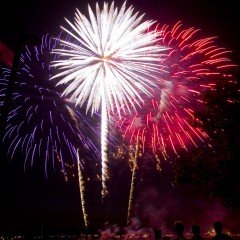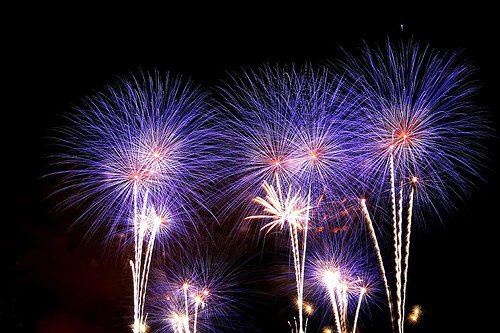
Celebrations and fireworks go hand in hand. Be it any marriage, new year eve or any grand ceremony, all of us are always ready with the fireworks to induce a lot of activity in the sky. It fills the otherwise gloomy sky with vivid colors. These fireworks entice you to look above in the dark sky and experience the varying colors overlapping each other to produce contrasting effects. Apart from enjoying the celebrations, it is a great fun to capture the imaginative effects of light emissions produced by the bursts. All you need to get started is to equip yourself with night photography basics and some tips on photographing the fireworks.
-
Plan Your Shoot
Firework celebrations don’t happen everyday. It thus requires you to plan your shoot in a pretty nice way. Once you have made up your mind to photograph all that activity happening in the sky, you need to decide for — your position, equipment and strategy.
-
Tune Your Camera Settings
The next thing is to set your camera right. Tune it to the following settings to get the expected results (and consider your particular requirements):
- Shutter-Priority Mode: When aiming for such activities and events, always consider setting your camera to the shutter priority mode — it’s all about timing. Try to control the shutter speed and leave other exposure parameters for the camera to decide. A low ISO is preferred for long exposures. If you are an expert you will be more comfortable setting your camera to manual mode and change the settings on a per-shot-basis. Optionally, consider setting the equipment to bulb mode (which keeps the shutter open for as long as the shutter release is pressed) if your camera offers the feature (most DSLRs do). It allows to press the shutter for as long as the cracker bursts and then release it to frame the entire activity in a single shot. Long exposures like these capture the entire action is a single frame and bring out magnificent shapes and forms as mapped by the subject.
- Continuous Focus Mode: The moving fireworks across the frame call for a continuous focus mode to maintain the focus on the subject. But you can get beautiful bokeh nevertheless by throwing the subject off focus.
- Focus Judiciously: It is advisable to set the focus to infinity when using a wide angle lenses as it becomes tricky for the camera to focus aptly for such distant subjects. And if you are using a telephoto lens or are framing the capture from a near-by location, let the auto-focus of your camera work for you.
- Turn The Flash Off: The subject you are aiming itself is the source of light and is sufficiently bright. Secondly, trying to bounce the flash off such a distant subject wouldn’t work even if it weren’t a light source. Save the battery.
- Shoot In RAW: Shooting in RAW is preferable as it leaves room for a lot of post-processing adjustments.
-
Framing Matters
While aiming for the magical lights alone is not a bad idea at all, you can also consider composing the view against a landscape. You can try out framing the event horizontally (for capturing the beautiful colors complimenting the dark night) or vertically (for adding your perspective and complimenting the fireworks with the surrounding environment).
-
Additional requirements
Besides being cautious about camera settings, take a little extra care on other requirements as well like:
- Tripod: Photographing the fireworks requires long exposures and thus slow shutter speeds; therefore, it is a basic requirement to rest your camera on a sturdy and stable surfaces to avoid hand-shakes and blur.
- Lenses: You have to be very decisive on what lenses you will be using for the shoot. If you want to capture the wide area of activity prefer using wide angle zoom lenses; while telephoto lenses can be considered for a zoomed in environment/vertical framing. Use the one with vibration reduction or similar features.
- Extras & Spares: To get the most out of your captures of the fireworks you have to consider shooting in RAW (for post processing efficacy) and try multiple shots (for getting that perfect one); which eats up a lot of memory space and increase the battery consumption. It is therefore wise to carry extra batteries and spare memory cards with you.
-
Experiment And Innovate
The best of all the tips is waiting here. Photography is an art and a lot of fun. As easy as it sounds, a little creativity will take your photographs to the next level. Let your creativity pop out of the box and try to spice up your shoot by including the surrounding elements. Consider practicing multiple exposures and merge them into a single shot to show multiple bursts in the same scene and time lapse photographing techniques to introduce interesting-ness or show the life of a burst.
The best way of learning is to experiment and learn from your mistakes. Just equip yourself with the basic understanding and go on the expedition to the world of camera, lights and action!


